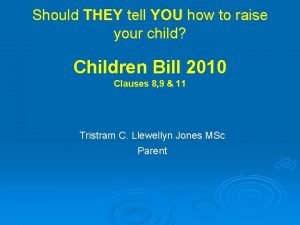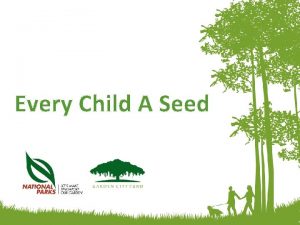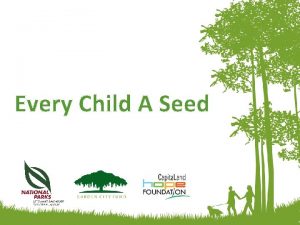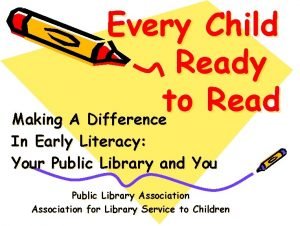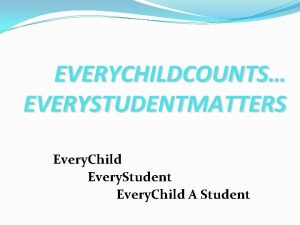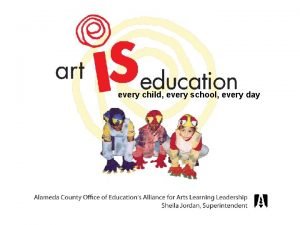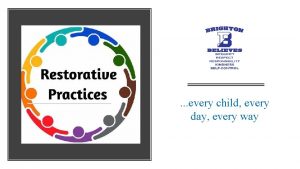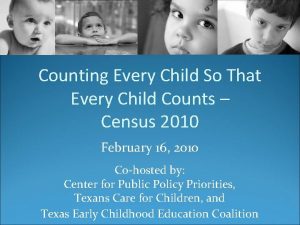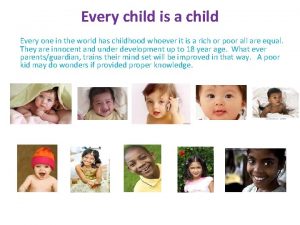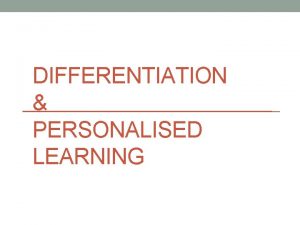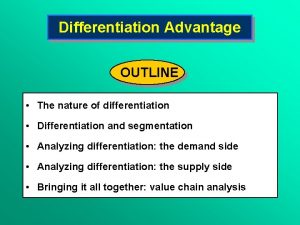DIFFERENTIATION EVERY CHILD MATTERS WHAT IS DIFFERENTIATION Differentiation
















- Slides: 16

DIFFERENTIATION EVERY CHILD MATTERS

WHAT IS DIFFERENTIATION? Differentiation means tailoring instruction to meet individual needs. Whether teachers differentiate content, process, products, or the learning environment, environment the use of on-going assessment and flexible grouping makes this a successful approach to instruction. Carol Ann Tomlinson http: //www. readingrockets. org/article/263/

WHAT IS DIFFERENTIATION? Modifying instruction to meet students’ varying: - readiness levels learning preferences learning profile and interests

WHAT IS DIFFERENTIATION? • Efforts of teachers to respond to variance among learners in the classroom. • Varying teaching approaches to create the best learning experience possible.

DIFFERENTIATING INSTRUCTION Content • What the student needs to learn • How the student will get access to the information

DIFFERENTIATING INSTRUCTION Process Activities in which the student engages in order to make sense of or master the content

DIFFERENTIATING INSTRUCTION Products Culminating work, projects that ask the student to rehearse, apply, and extend what he or she has learned.

DIFFERENTIATING INSTRUCTION Learning Environment The way the classroom works and feels.

DIFFERENTIATING CONTENT • Reading materials at varying readability levels • Using spelling or vocabulary lists at readiness levels of students • Presenting ideas through both auditory and visual means • Using reading buddies • Extend the thinking or skills of advanced learners

DIFFERENTIATING PROCESS • Using tiered activities • Providing interest centers that encourage students to explore and enquire • Task lists written by the teacher and containing both incommon work for the whole class and work that addresses individual needs of learners • Offering manipulatives or other hands-on supports for students who need them • Varying the length of time a student may take to complete a task in order to provide additional support for a struggling learner or to encourage an advanced learner to pursue a topic in greater depth.

DIFFERENTIATING PRODUCT • Giving students options of how to express required learning e. g. , create a puppet show, write a letter, do drawings/paintings or develop a mural with labels/create posters • Using rubrics that match and extend students' varied skills levels • Allowing students to work alone or in small groups on their products • Encouraging students to create their own product/ assignments as long as the assignments contain required elements.

DIFFERENTIATING LEARNING ENVIRONMENT • Create places in the room to work quietly and without distraction, as well as places that invite student collaboration • Providing materials that reflect their culture/experience • Setting out clear guidelines for independent work that matches individual needs • Developing routines that allow students to get help when teachers are busy with other students and cannot help them immediately • Helping students understand that some learners need to move around to learn, while others do better sitting quietly

Differentiation of Instruction Is a teacher’s response to learner’s needs guided by general principles of differentiation Respectful tasks Flexible grouping Continual assessment Teachers Can Differentiate Through: Content Product Process LEARNING ENVIRONMENT According to Students’ Readiness Interest 13 Learning Profile

The Whole Picture Keeping the End in Mind • What will you teach to the whole class? What will the whole class do together? • What options will engage students with various readiness, interest, and learning preferences? • What varied resources and materials will students use ? 14

REFERENCE • http: //members. shaw. ca/priscillatheroux/diff erentiatingstrategies. html • http: //www. teachnology. com/tutorials/teaching/differentiate/

B L ES S I N G S Dear Lord……pity my “simpli…. city“ and cover our teachers. “Children are the hands by which we take hold of heaven”. Henry Ward Beecher
 Orange shirt day quotes
Orange shirt day quotes Every child matters be healthy
Every child matters be healthy Why was every child matters scrapped
Why was every child matters scrapped Every child every day
Every child every day Every second matters
Every second matters Every rotarian every year
Every rotarian every year Every nation and every country
Every nation and every country Every nation and every country
Every nation and every country Microsoft mission statement
Microsoft mission statement Every picture has a story and every story has a moment
Every picture has a story and every story has a moment Every knee shall bow every tongue confess
Every knee shall bow every tongue confess Every child a seed
Every child a seed Pta every child one voice
Pta every child one voice Every child is gifted they just unwrap
Every child is gifted they just unwrap Tag question every mother loves her child
Tag question every mother loves her child Every child a seed
Every child a seed Every child ready to read six skills
Every child ready to read six skills


